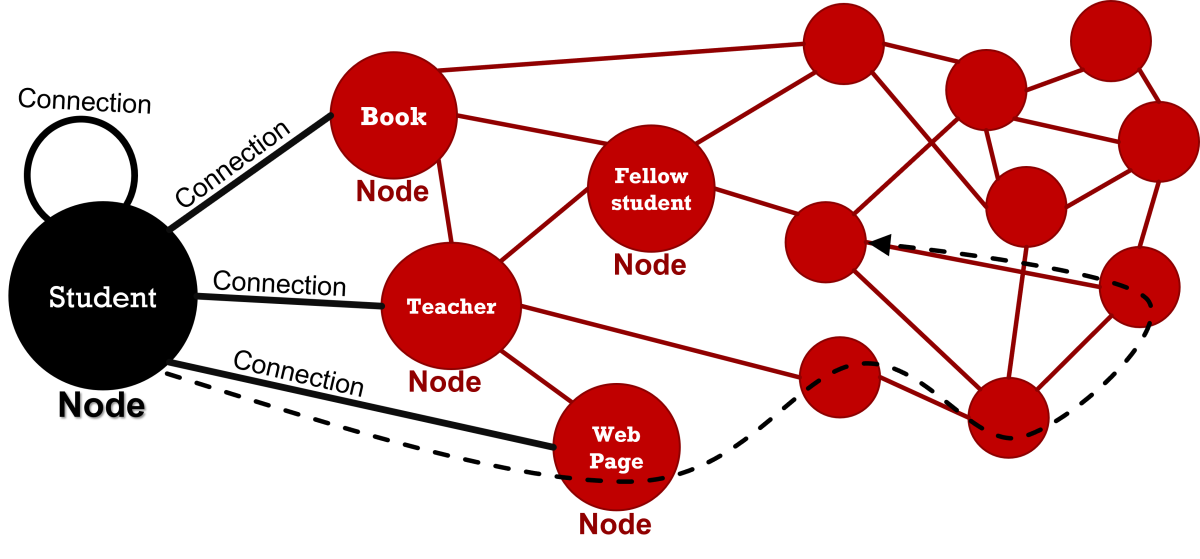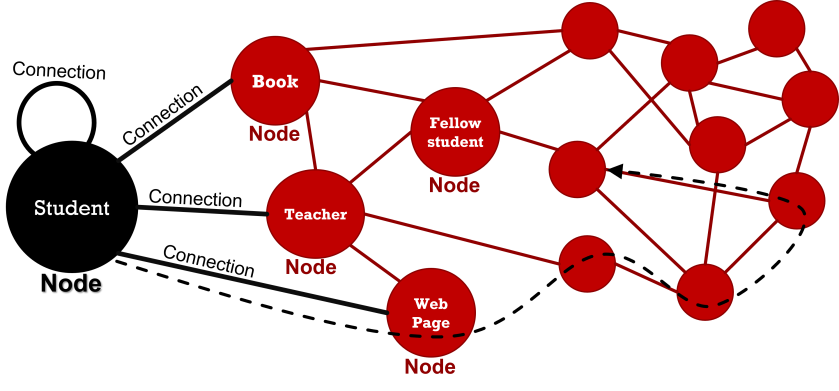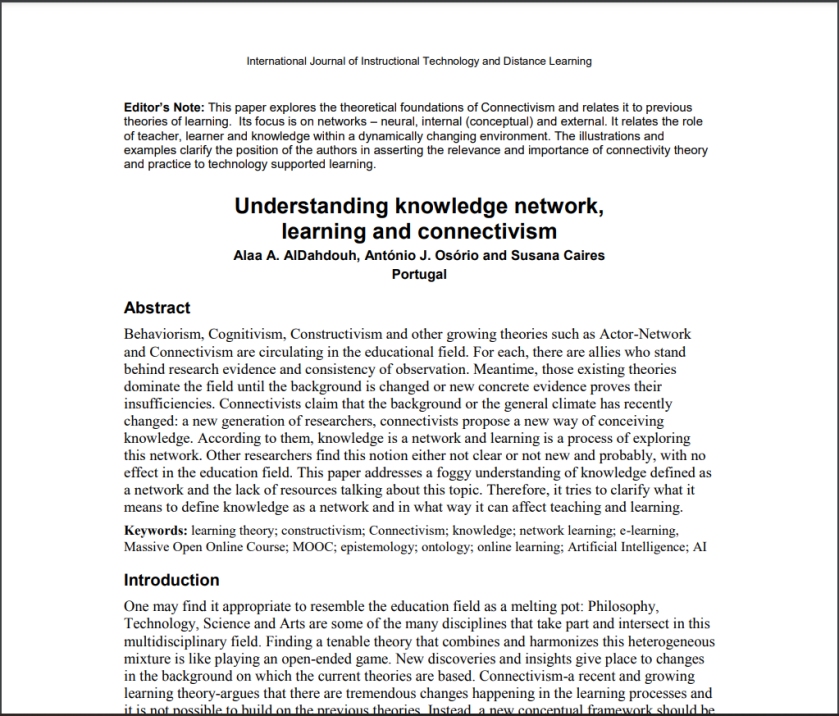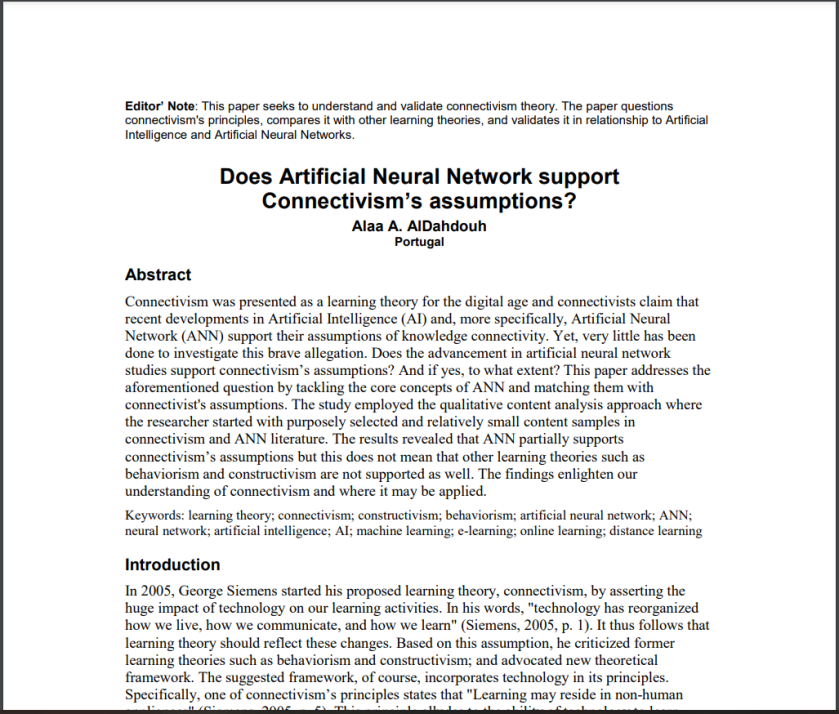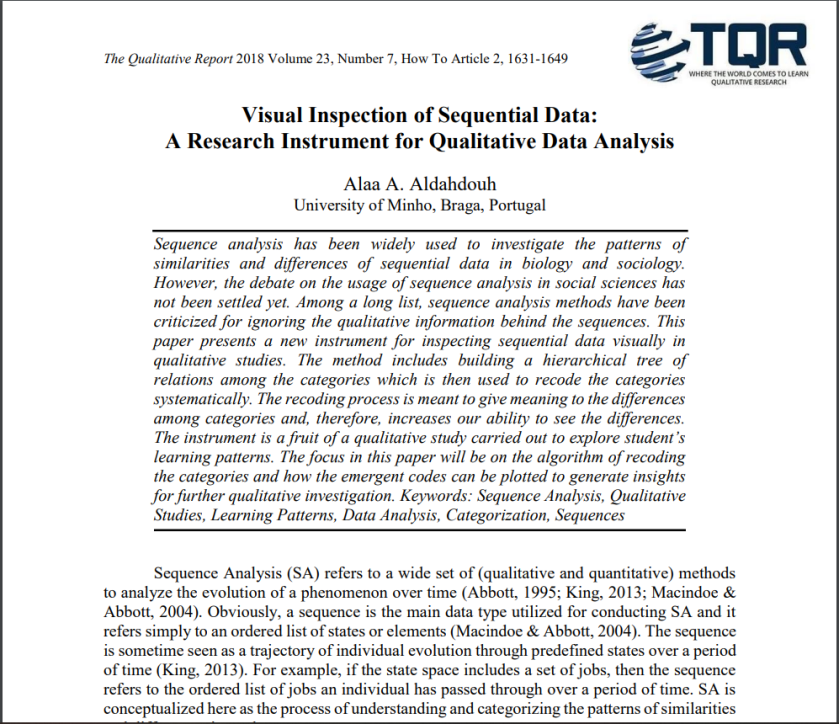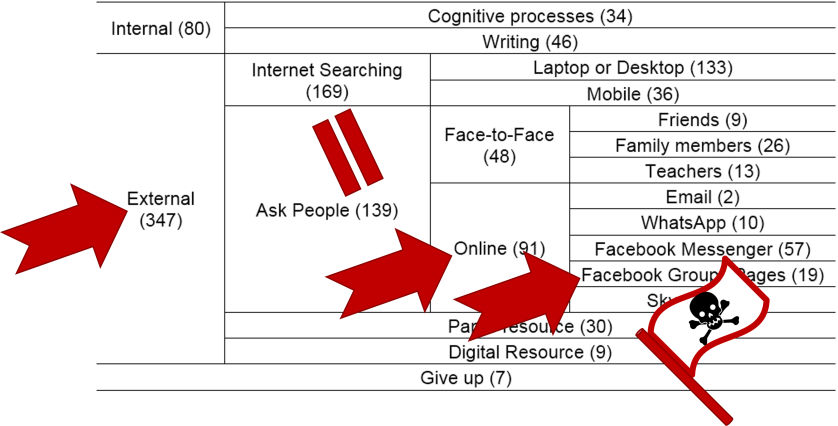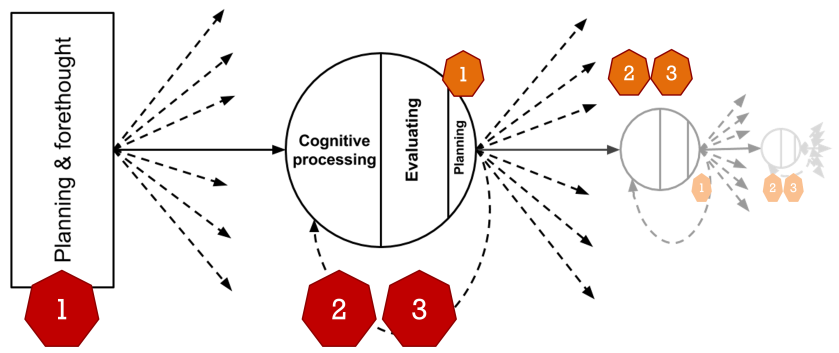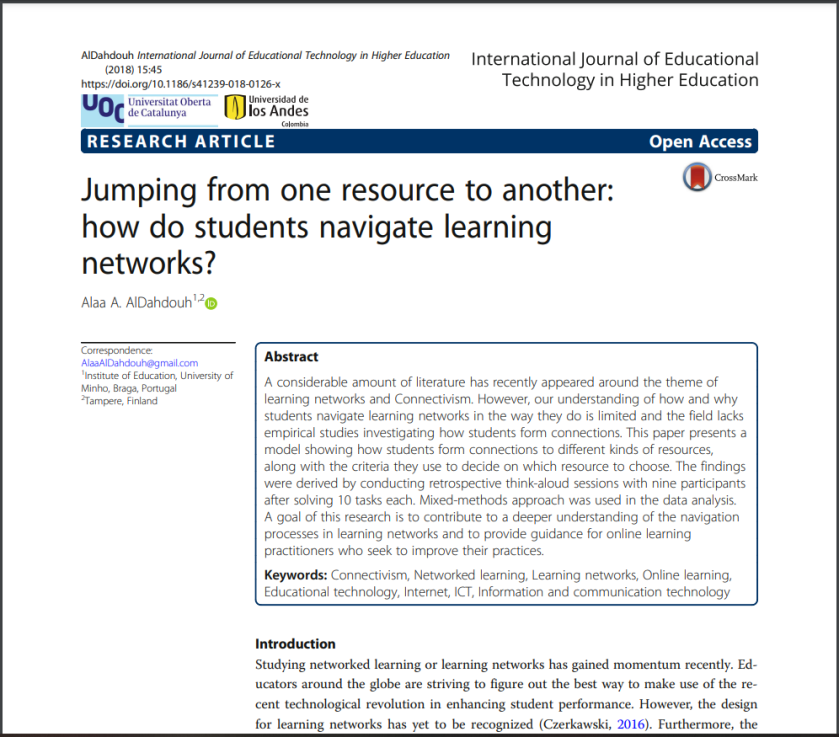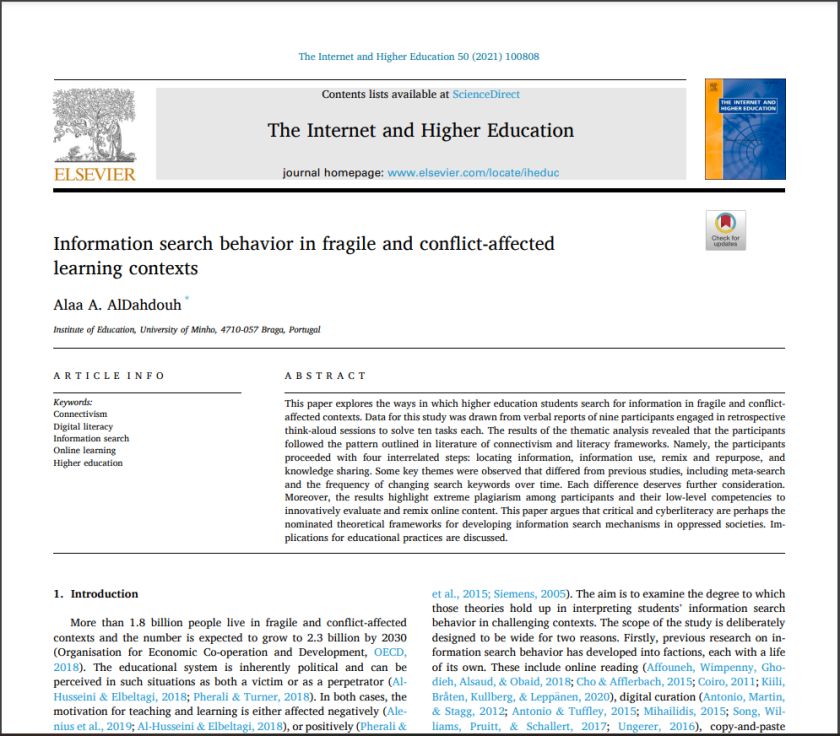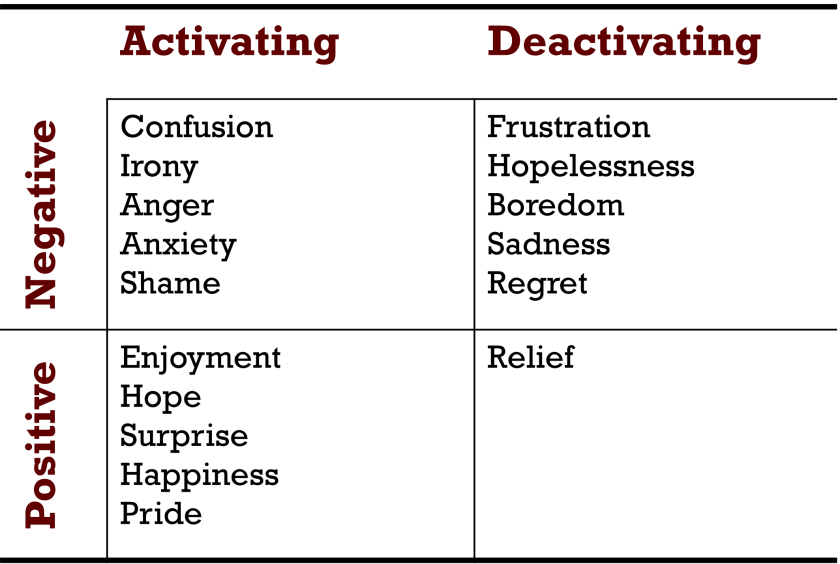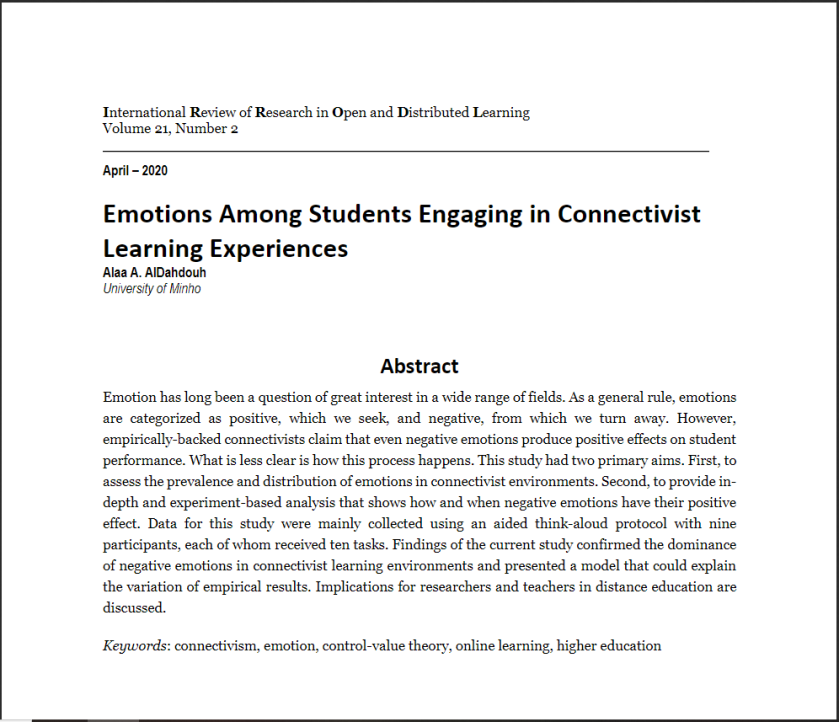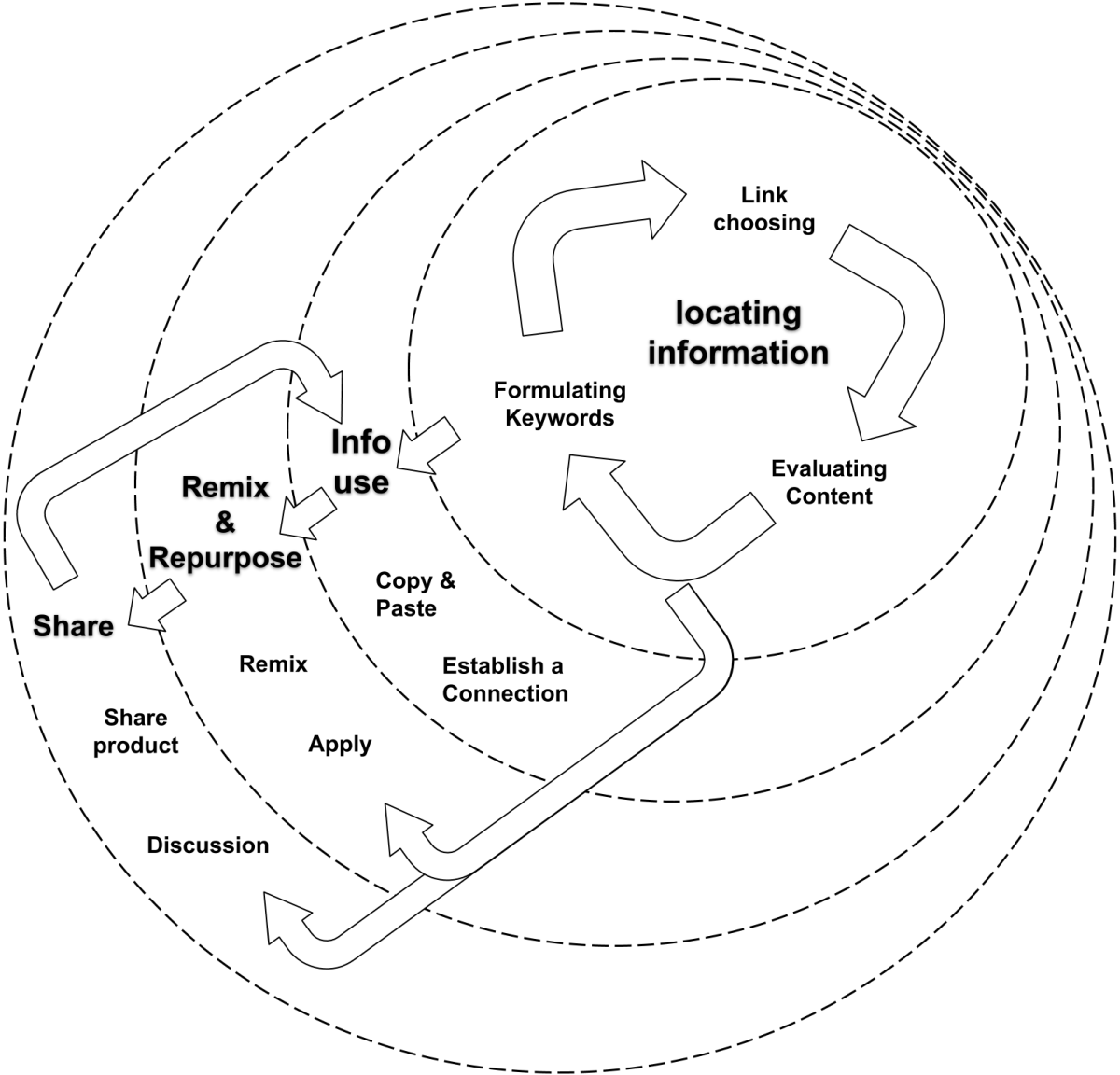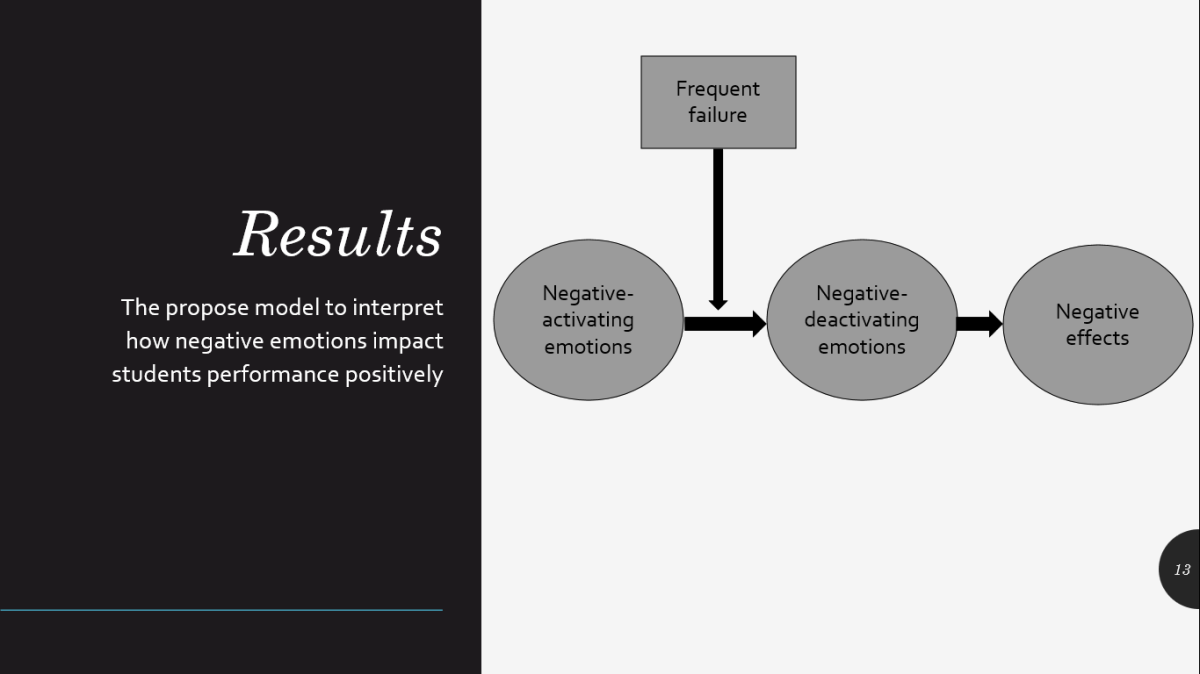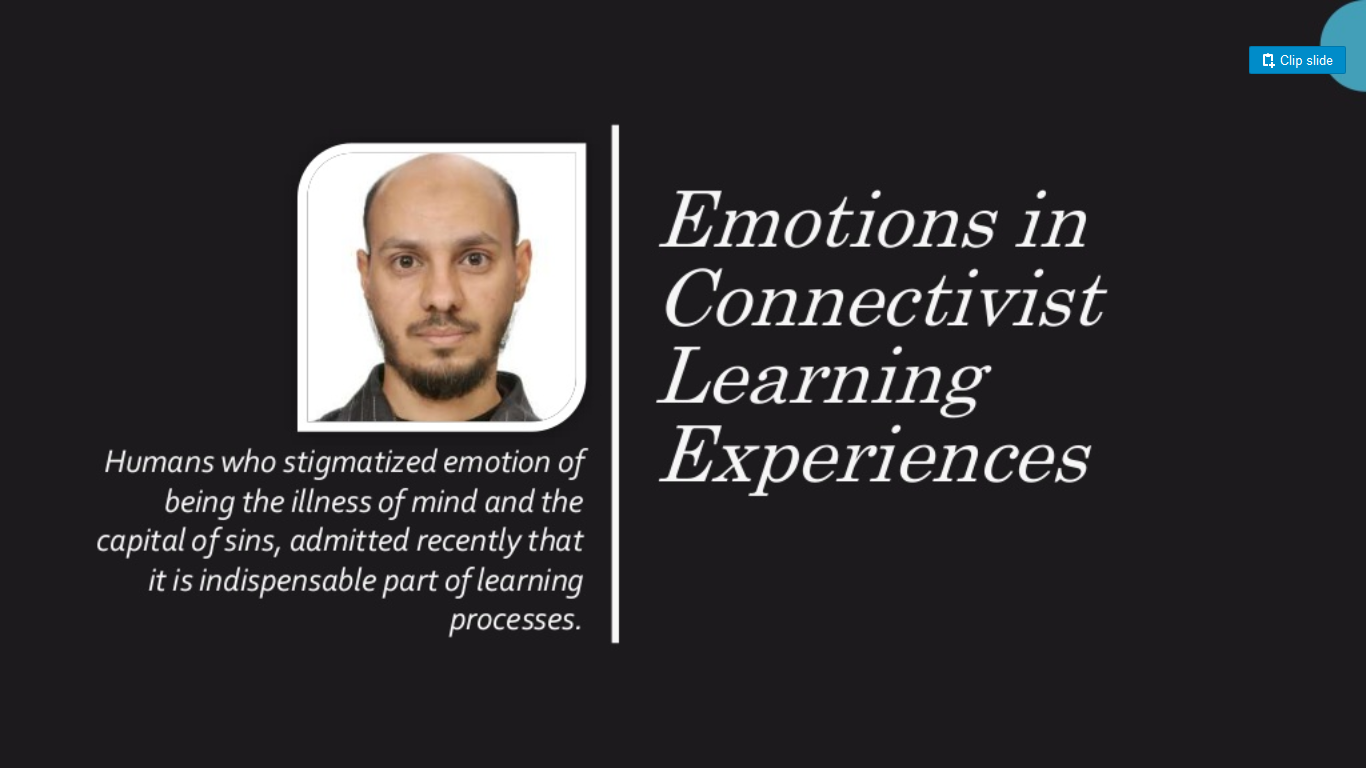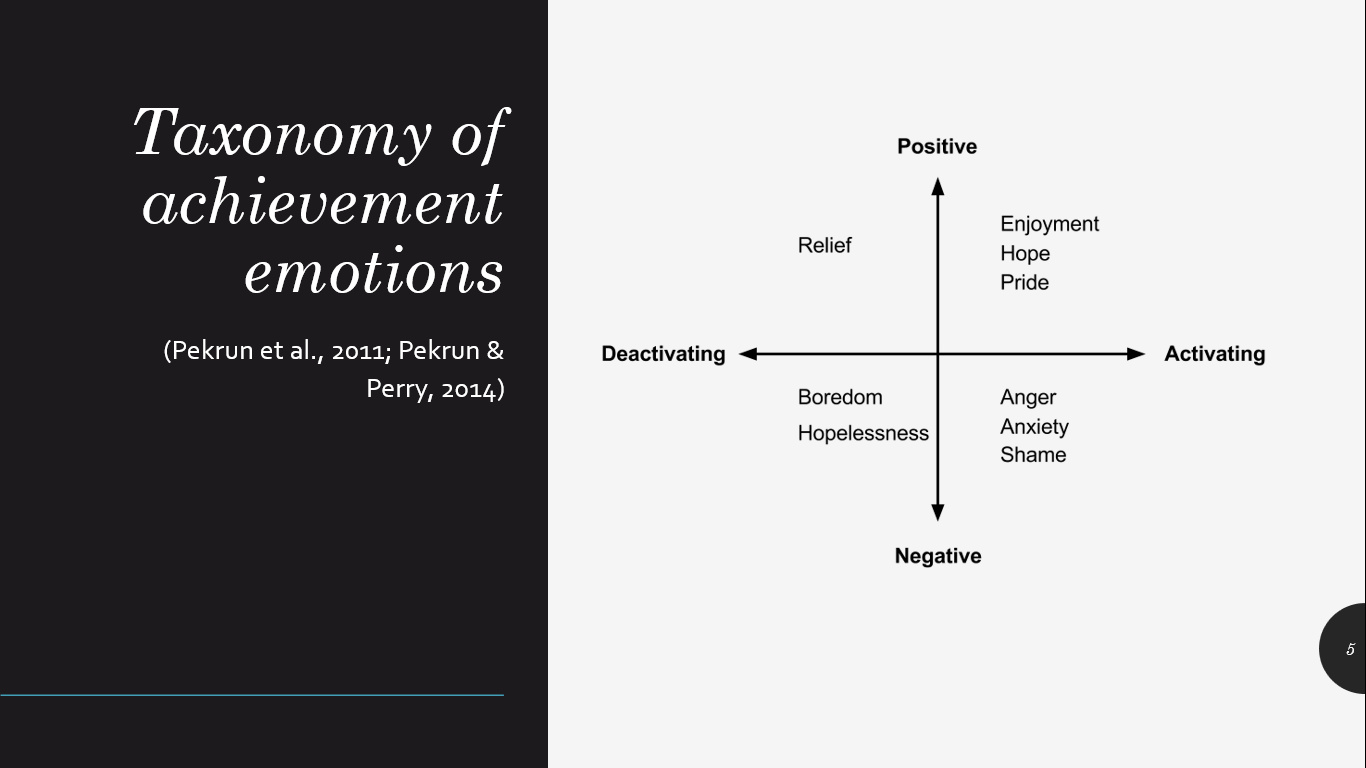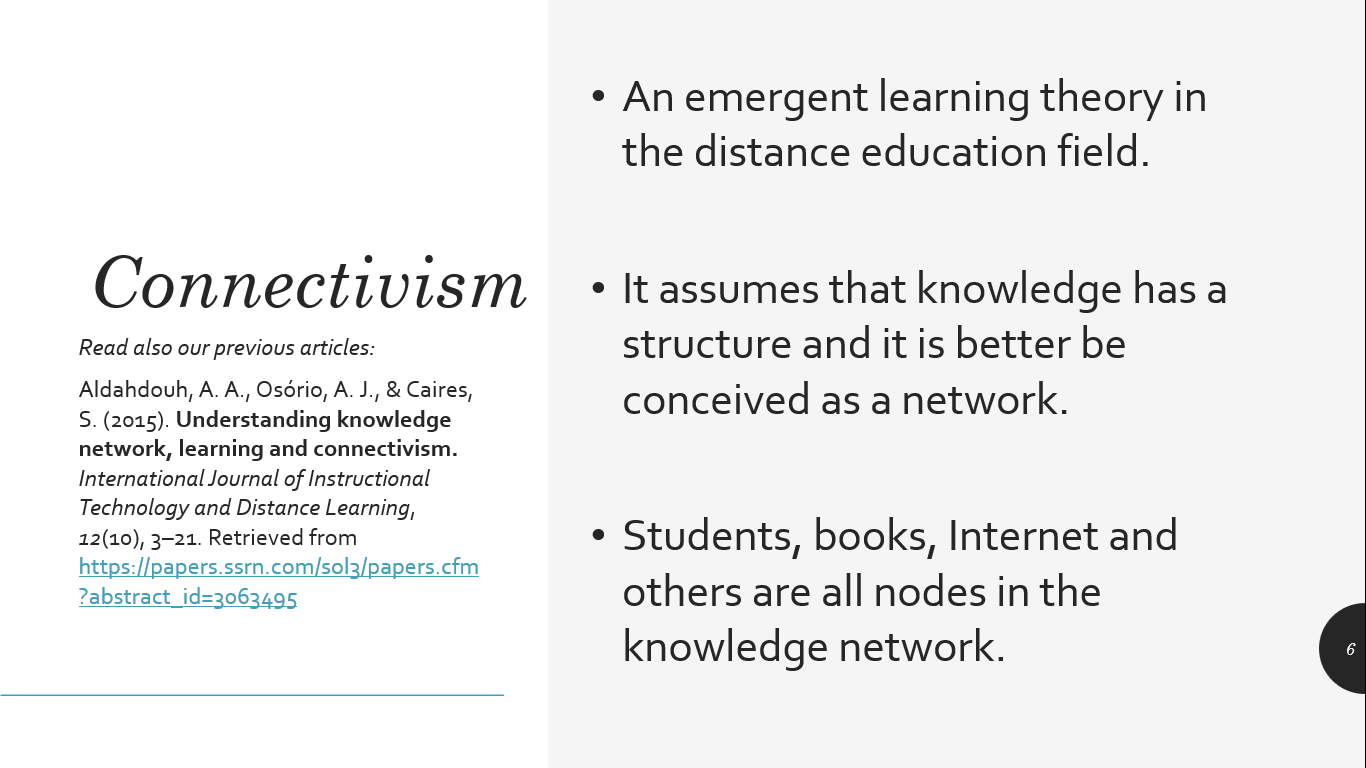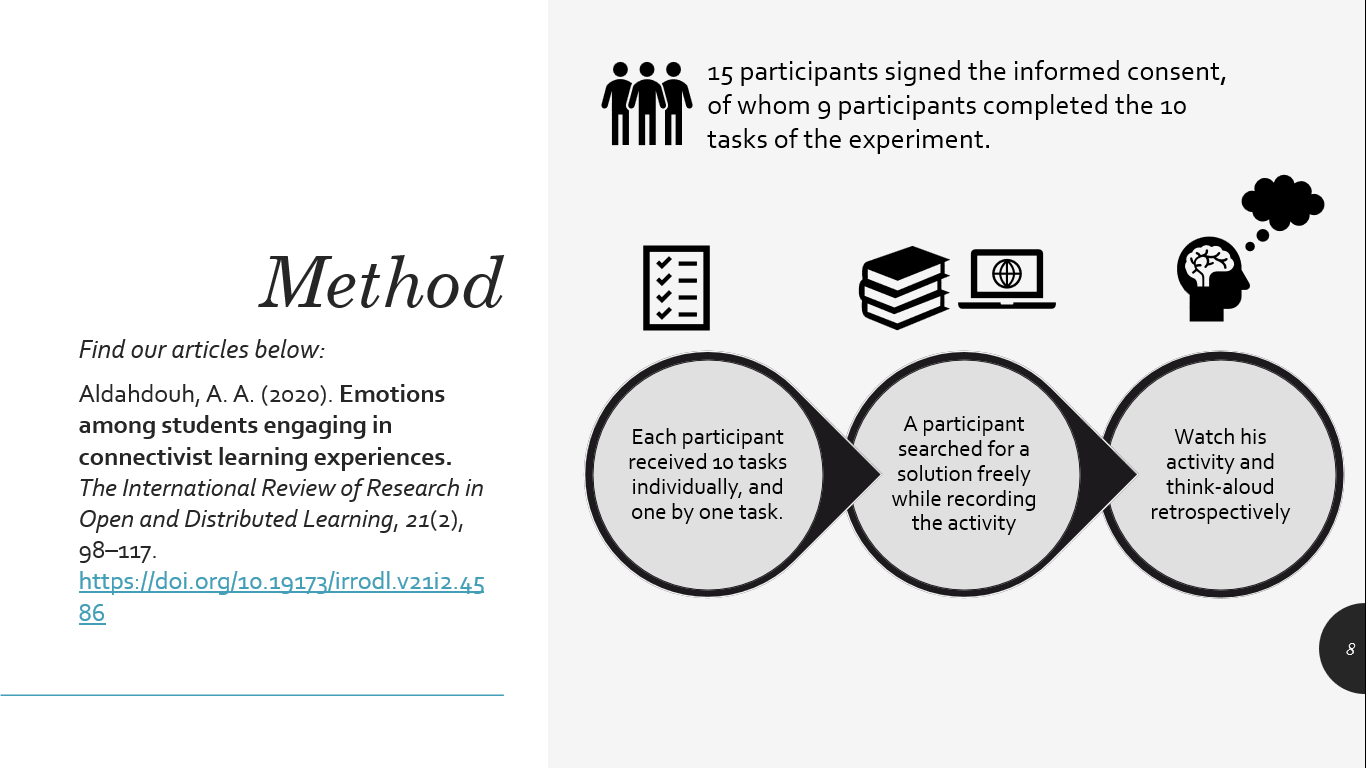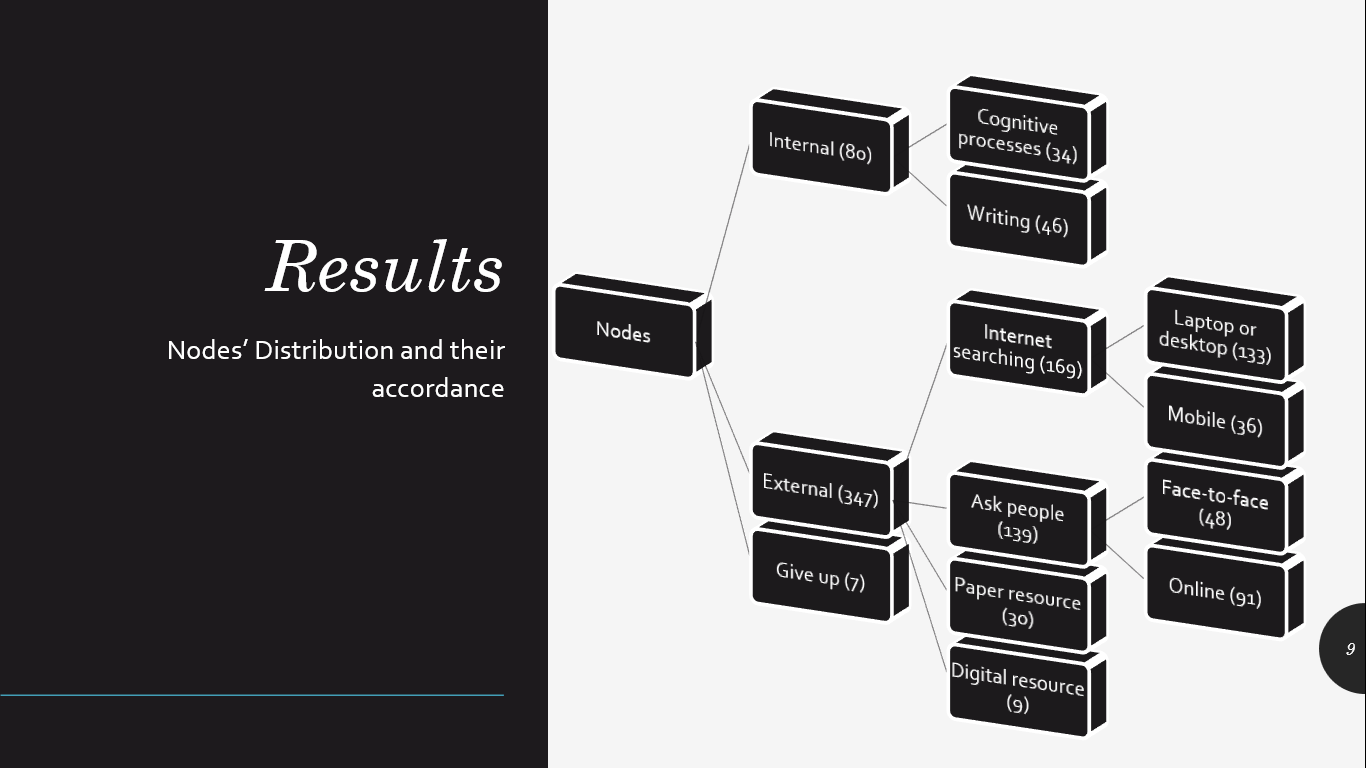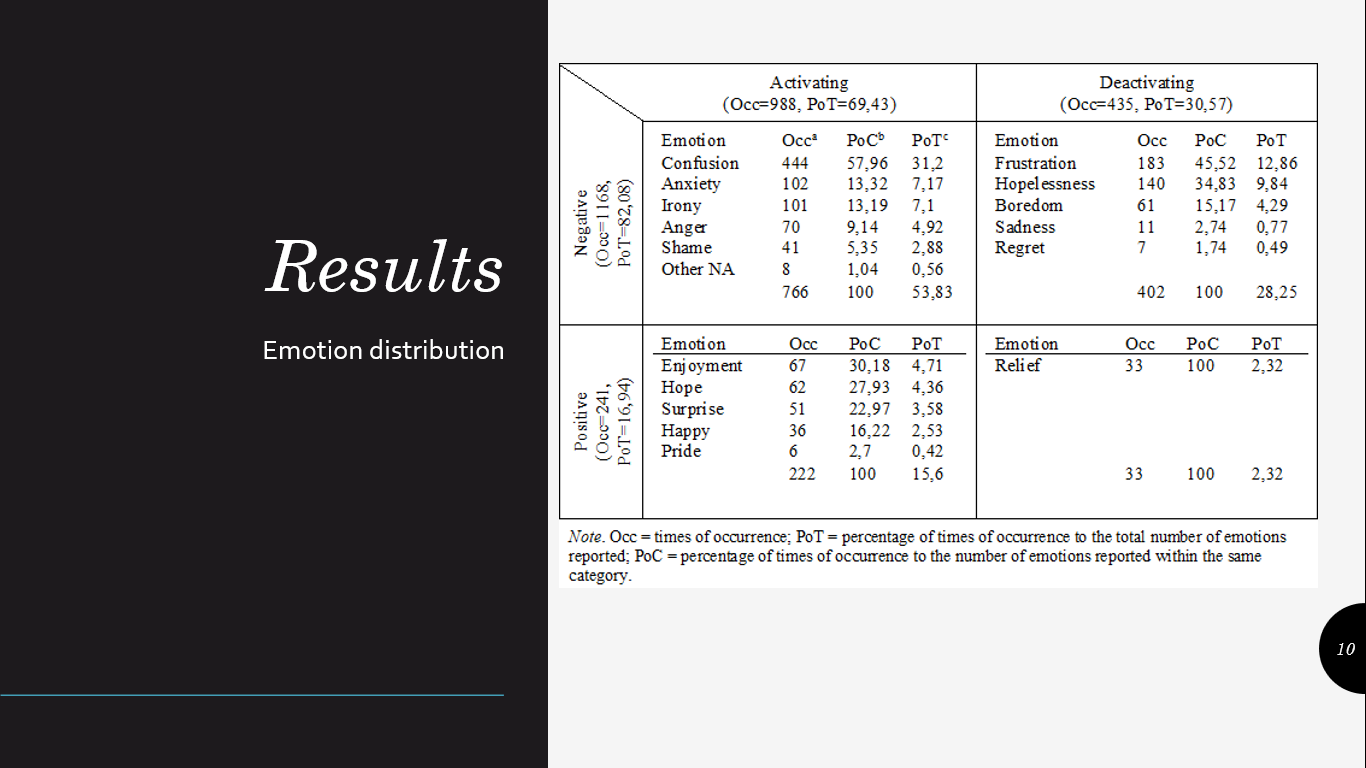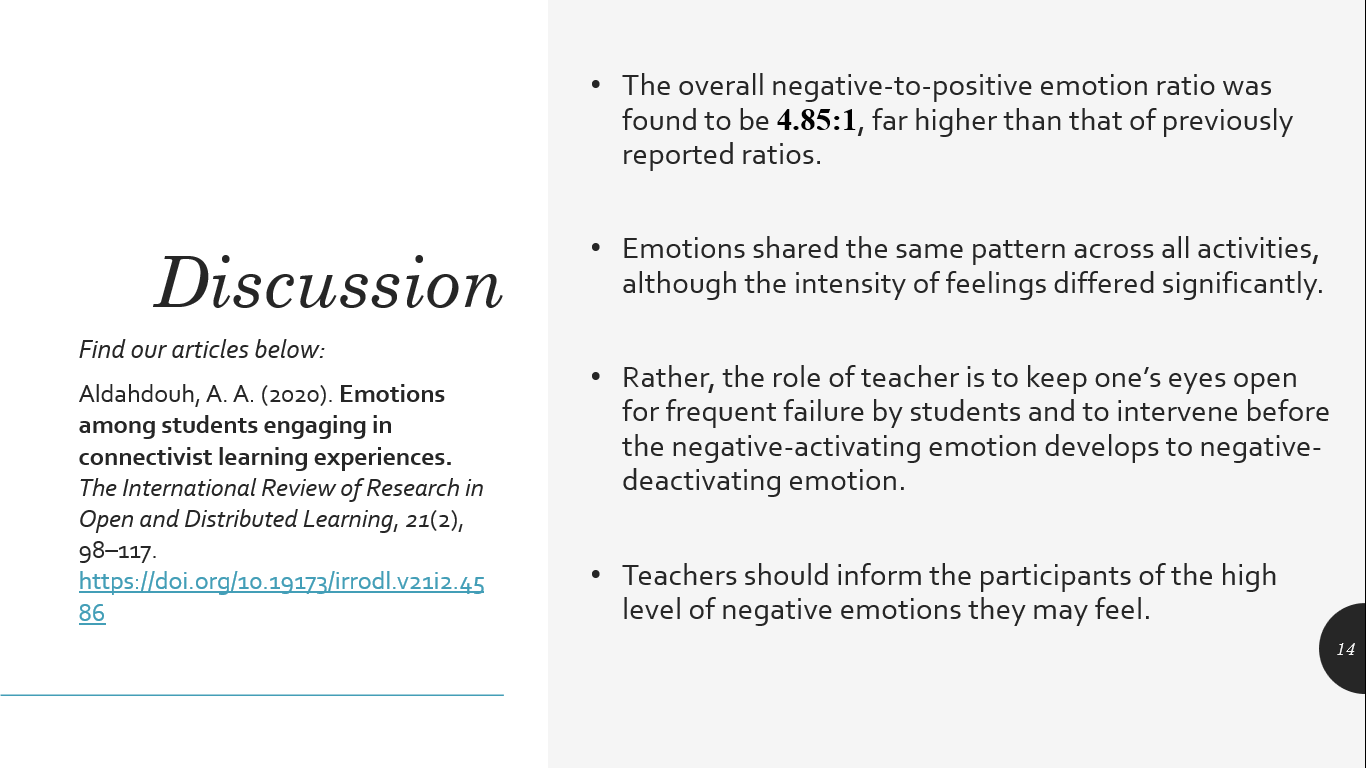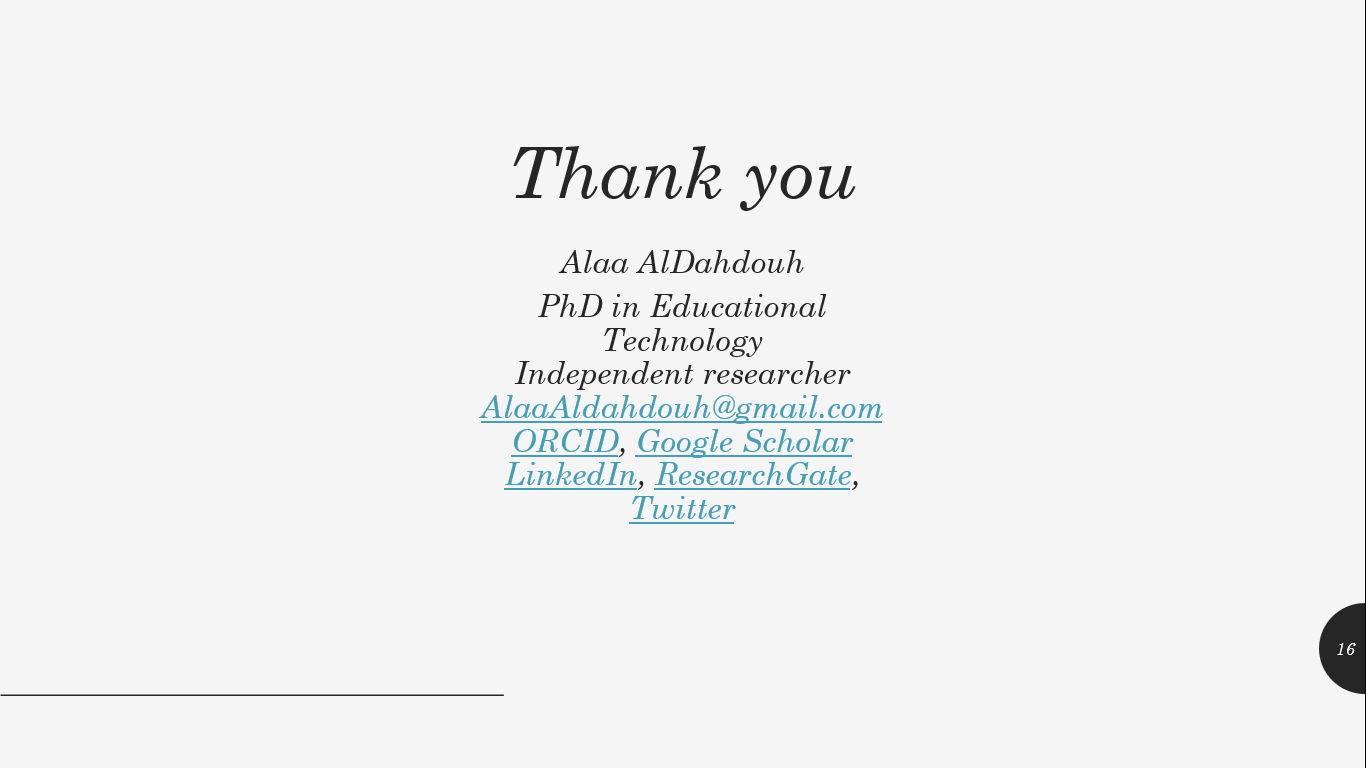It is somehow difficult to reduce a scientific work journey of 5 years in blog lines. However, I just feel that this is something I have to do, not only for others to learn about the hidden conclusions of this journey which otherwise will be scattered in multiple studies, but also for me to reflect on and maybe review myself for years of my life.
The idea
Connectivism was there in my mind before I know it. I just found others who preceded me and talked and wrote about it when I started my PhD degree back in 2013.
Years before 2013, I ran a debate about human working memory with one of my professors in the Faculty of Education. He insisted that technology has ruined humans own memories since many people rely more and more on their mobiles and laptops. He also presented some research evidence in support of that.
It was hard to support my argument and, at the same time, it was very hard to accept his. Human is a clever being; if tools or technologies would help us to save our memories, then would it be logical to kick these technologies out or even reduce their usage because they harm our memories? On the other hand, Cognitivism and Constructivism (some of well-known learning theories) clearly stated that human internal memories are important in a learning process and educators should foster student’s usage of their internal memories (Rosenshine, 2012). The consequences of such theories are that educators from all over the world are fighting their students’ tendency to use external memories and tools such as math calculators and mobile phones. The tendency to use external memories over internal memories has stimulated students to ask: Why should we reinvent the wheel? If the answer exists somewhere on the network, why should we spend time again to rethink of or memorize it (Brabazon, 2012)?
Few months at the beginning of my PhD was enough – for my fortunate – to reach out connectivism. Assuming knowledge structure as a network and learning as a process of finding patterns residing in this network (inside or outside the human brain, it does not matter) connectivism was proposed, in 2005, by George Siemens.
We presented our understanding of Connectivism in a separate work

In addition to being the most read post in OLDaily this year, this article was a personal favourite of mine.
I also compared between connectivism and artificial neural network (ANN) a software structure developed and based on concepts inspired by biological functions of brain; it aims at creating machines able to learn like human
More
I have also reviewed a so called Massive Open Online Course (MOOC) because it sprung originally from connectivism.
Mysterious Research Questions
The general research question I was seeking to answer was:
Can connectivism explain how students learn?
The scope of this research question is deliberately wide and I don’t claim that my dissertation has been able to really unfold all of its aspects. As so, I developed sub-research questions to split it into manageable chunks of work:
- What kind of nodes does a student contact?
- How does a student form a connection?
- Why does a student form a connection in that way?
- What is a student feeling while connecting to different nodes?
- When does a student prefer external network over internal network and vice versa?
Look weird? It really is. But the logic behind those questions is pretty simple; they searched for the “whats”, “hows” and the “whys” aspects of learning. Let us just recall that the node refers to any object which can be connected (i.e. person, book, webpage, mobile application, thought, idea).
Methodology
The experimental part was conducted remotely where I was located in Finland and the participants located in Gaza Strip, in Palestine. The procedures consisted of three stages as shown.
The approach to empirical research adopted reflects a form of retrospective think-aloud protocols (Ericsson & Simon, 1980; van den Haak, De Jong, & Jan Schellens,2003). Mainly, each participant was individually given 10 tasks in succession. The participants were free to do whatever they wanted to solve the tasks at hand, but they had to record their activities thoroughly (e.g., video recordings of laptop/mobile screen while searching the Internet, voice recordings of conversations, screenshots of WhatsApp chats). After that, the participants joined Retrospective think-aloud sessions where they watched their documented activities and revealed whatever was on their mind while performing those activities.
I introduced a method to visually inspect students’ steps to solve the tasks.
Results
What kind of nodes does a student contact?
The students consulted a wide spectrum of nodes. In general, there was a general tendency toward external nodes (in comparison to internal nodes). Both searching internet and asking people were somehow equal. The participants seemed to prefer asking people online more than face-to-face. And there was a general tendency toward new technologies (such as Facebook and WhatsApp) in comparison to old technologies (such as email and Skype).
A dangerous sign in the experiment was that some students preferred to give up 7 times (even though they were allowed to do whatever they wanted to).
Read more about the distribution of nodes on this study
Notes
Connectivism has been criticized for making it all easy for students to copy-and-paste answers from the Internet. My research has actually proven that it all depends on what kind of questions a teacher is posing to students. If it is factual question, then yeah, it is all easy. Just look at the number of times the students gave up to know that Internet access means nothing in some cases.
How does a student form a connection?
General interpretation
The mechanism at which students are connecting to nodes in the network can be seen as a continuous process of three steps
- Planning & forethought: in this stage, the participant decides which node to connect to among all available nodes.
- Cognitive processing: in this stage, the participant interacts with the node (read the book he chose, or ask the person he preferred).
- Evaluation: in this stage, the participant judges the value of the node he was interacting with
Read more about student’s criteria to select and evaluate each node
Notes
In Planning phase, the participants applied three perceptions about the node to decide whether to connect to it:
- self-efficacy
- eligibility of the resource
- feasibility of the resource
Node interactions
How a student forms a connection can also be seen as a process of building a personal learning network.
This process is adopted and adapted from the connectivism’s literature. The process consists of four interrelated steps:
- Information search: formulating keywords, choosing links, evaluating content.
- Inform use: copy-and-paste, establishing a connection.
- Remix & Repurpose: content curation, apply steps on their devices.
- Share: disseminate knowledge, discussion
Read more about how students form their personal learning network (PLN)
Notes
In this study, I provided a detailed account of each step. For example, what does constitute information search or use? What do student do in remixing and repurposing step? Plagiarism and sharing are all covered as well.
Why does a student form a connection in that way?
Disclosing the higher-level of goals was rare but spontaneous as I didn’t ask them explicitly to clarify their higher-level goals. Nevertheless, I have spotted 5 main goals on their verbal report.
| Goal | Definition | Note |
| Newness | pursuing trends, newness and modern knowledge | week |
| Task-oriented goal | doing the task for its sake | |
| self-oriented goal | doing the task to develop one’s self. | |
| Other-oriented goal | doing the task to show others. | |
| – Peer-oriented goal | sub-goal targeting one’s colleagues | |
| – Teacher-oriented goal | sub-goal targeting one’s teachers | New |
| Extrinsic goal | doing the task for external motives |
The participants were driven by the task more than the newness of the nodes, which is the main motive according to Connectivism. In most cases, the participants were not aware of the newness of the node and whether the information was outdated or not, something which may be considered a lack of Digital Literacy skills.
I proposed -base on the student’s testimonies- that the original ‘other-oriented goal’ should be revised to include a distinction between teacher-oriented goal and peers-oriented goal. Some participants disclosed that their intentions and their main concentrations were not to impress their colleagues. Rather, their main concentrations were to impress their teachers. Actually, participants holding teacher-based goal tended to appear dull in front of their colleagues. They spend a lot of time on selecting the teachers for the next academic courses.
Look! Before we [she and her colleagues at the university] take any course with a teacher, we learn about the teacher very well; what his [her] system is; what his [her] style is; how he [she] works and how he [she] acts. I mean; we asked the girls [other students who took courses with that teacher before] about him [her]. They told us what to do with him [her] and how to deal with him [her]. Based on what we learnt about the teacher, we act on the course ….
One of the participants
Teachers’ words are critically evaluated. Not all materials in the course are studied; only those materials that the teacher has implicitly indicated they are important are considered. The questions in the assignments or in the exam are answered based on their assumptions of the teacher. For example, if their analysis reveals that the teacher’s character is that of a disgruntled man, they tend to put False for all statements in True-or-False question when they really don’t know the answer. Because, as they assumed, this kind of men would tend to disregard and falsify the others.
What is a student feeling while connecting to different nodes?
I found that learning in connectivist environment tend to raise negative emotions of the students. But the good news is that not all negative emotions has negative consequences on their performance.
Read more about emotions in connectivist environment
Notes
The overall negative- to-positive emotion ratio was found to be 4.85:1, far higher than that of previously reported ratios. However, for all negative-activating emotion I detected, the emotion showed a positive effect on the participants’ performance, particularly at first.
When does a student prefer external network over internal network and vice versa?
The results supported a cyclic model in which the factors which led the participants from Internal node to External node were different than those led them from External to Internal node. For example, students who has low self-efficacy to find the solution themselves tend to count on external nodes (e.g., asking friend), but possessing high self-efficacy not necessarily lead them to use their internal node.
Here I would provide a single example of how one participant and her brother was trying to solve the ninth task in the experiment and moved from internal to external nodes when encountering difficulties. Her brother showed a high Self-efficacy throughout the conversation. For instance, at the beginning of the conversation, he perceived the task as easy and only a few steps away. Both ,the participant and her brother, engaged into a conversation to write the missing parts of the story (the task). The writing process, however, didn’t take few minutes to solve as her brother expected: they’ve ended the first session and engaged into another in the evening. The analysis process of the story’s events was daunting because the events should perfectly fit the shown parts of the story, as the participant emphasized.
– Participant
It could be that the meal was ready but he didn’t recognize that.
– Her brother
But her mother was the one who was calling.
[long pause]
– Her brother
Was she?
– Participant
Yeah
[long pause ended by a sound of a pen thrown on the table]
– Her brother
Listen! Go and search for the story on the Internet.
Her brother experienced a kind of failure which made him suggest redirecting the course of the solution; he suggested depending on external nodes (searching the internet). In this excerpt, the failure in using internal nodes was the root cause for using external nodes.
Conclusion
I believe Connectivism theory provides a valuable framework for interpreting how the higher education students learn. One thing to keep in mind though is that connectivism suits only those students who are possessing suitable level of digital literacy skills, who are self-dependent, self-regulated, and know what they want. The chronological age is not that important as we are seeing students at the university who are lacking the fundamentals of those skills while other schoolers who are far ahead of their peers. My personal opinion is that other learning theories should serve students who are behind but the aim should always be preparing them to join the connectivist learning environment. I perceive connectivism as the target because our students will end up working in workplaces where the information has an expiration date, and is likely too close. The importance of inner memory and the value of what currently known is questionable. We better equip them to realize that sooner rather than later. However, I don’t believe that connectivism is perfect; there are still areas to refine our understanding and our practice. In my PhD, I have touched some of those areas:
- Connectivism’s principles didn’t mention clearly the evaluation process of the nodes as a distinctive and needed skill for learning.
- Learners in regular universities are busy and driven by academic tasks and they are not aware of Personal Network Learning approach.
- The principle of Connectivism indicating that the newness is the intent of all connectivist learning activities didn’t reflect the diversity of the participants’ goals.
- Although the thesis supported – to a certain degree – connectivist’s assumption that negative emotions encourage students to make new connections, this was not always the case.
Although this PhD aims at testing Connectivism theory, its essence is to generate hypothesis to enhance the theory. The results of my thesis do not, and can’t, prove or deny the generalizability of Connectivism’s principles. What came in the results section and was listed in the summary section may be seen as suggestions or, more precisely, as hypothesis which have to be tested in large scale samples.
Personal Statement
Connectivism is quite interesting study area. I wish if I could continue, but unfortunately I failed to secure a job in the academic world – mainly because I don’t have experience in teaching. As I returned back to IT section where I original belong, I wish researchers in connectivism good luck and success. And my special thanks to Stephen Downes, who has been following up and commenting on my studies on the go.
Keywords:
- Connectivism
- Knowledge network
- Learning network
- networked learning
- Connectivist learning network
- e-learning
- online learning
- MOOC
- cMOOC
- xMOOC
- Emotions
- Negative emotions
- Connectivist network’s nodes
- Internal and external memory
- Information search behavior
- Learning motivation
- Learning network navigation
- Knowledge sharing
- Plagiarism
- Digital literacy skills
- Artificial Intelligence (AI)
- Machine learning
- Artificial Neural Network
- Online reading
- Curation
References
Rosenshine, B. (2012). Principles of Instruction: Research-Based Strategies That All Teachers Should Know. American Educator, 36(1), 12. https://www.aft.org/sites/default/files/periodicals/Rosenshine.pdf
Brabazon, T. (2007). The University of Google: Education in the (post) information age. Ashgate Publishing, Ltd.
Siemens, G. (2005). Connectivism: A learning theory for the digital age. International Journal of Instructional Technology and Distance Learning, 2(1), 3–10. http://www.itdl.org/Journal/Jan_05/article01.htm
Ericsson, K. A., & Simon, H. A. (1980). Verbal reports as data. Psychological Review, 87(3), 215–251. https://doi.org/10.1037/0033-295X.87.3.215
van den Haak, M., De Jong, M., & Jan Schellens, P. (2003). Retrospective vs. concurrent think-aloud protocols: Testing the usability of an online library catalogue. Behaviour & Information Technology, 22(5), 339–351. https://doi.org/10.1080/0044929031000.
AlDahdouh, A. A. (2018). Visual Inspection of Sequential Data: A Research Instrument for Qualitative Data Analysis. The Qualitative Report, 23(7), 1631–1649. https://doi.org/10.46743/2160-3715/2018.3295
AlDahdouh, A. A. (2019). Individual learning experience in connectivist environment: A qualitative sequence analysis. International Journal of Research in Education and Science, 5(2), 488–509. https://www.ijres.net/index.php/ijres/article/view/536
AlDahdouh, A. A., Osório, A. J., & Caires, S. (2015). Understanding knowledge network, learning and connectivism. International Journal of Instructional Technology and Distance Learning, 12(10), 3–21. http://www.itdl.org/Journal/Oct_15/Oct15.pdf#page=7
AlDahdouh, A. A. (2017). Does artificial neural network support connectivism’s assumptions? International Journal of Instructional Technology and Distance Learning, 14(3), 3–26. http://itdl.org/Journal/Mar_17/Mar17.pdf#page=7
AlDahdouh, A. A., & Osório, A. J. (2016). Planning to design MOOC? Think first! The Online Journal of Distance Education and E-Learning, 4(2), 47–57. https://www.tojdel.net/journals/tojdel/articles/v04i02/v04i02-06.pdf
AlDahdouh, A. A. (2018). Jumping from one resource to another: how do students navigate learning networks? International Journal of Educational Technology in Higher Education, 15(1), 45. https://doi.org/10.1186/s41239-018-0126-x
AlDahdouh, A. A. (2020). Emotions among students engaging in connectivist learning experiences. The International Review of Research in Open and Distributed Learning, 21(2), 98–117. https://doi.org/10.19173/irrodl.v21i2.4586
